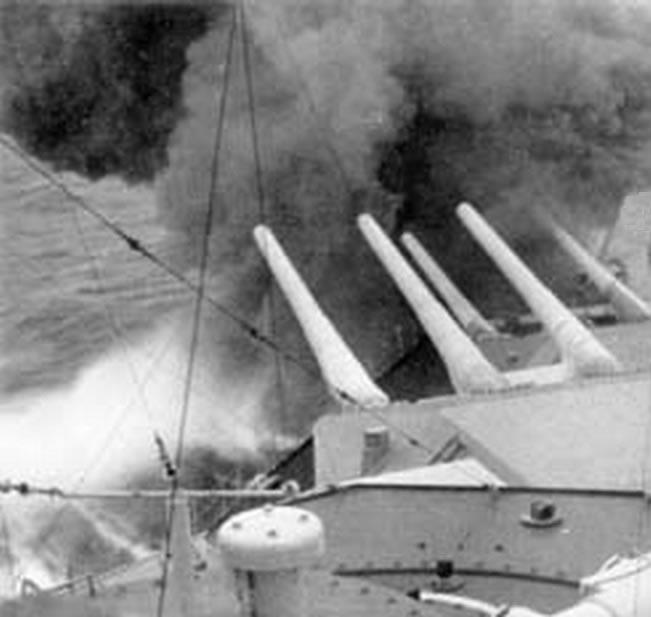HSMS Svealand (BC-1938)
Return to Scandinavian Navy Page:
The two Svealand class ships were Scandinavias last and best venture into capital ship design and building. It was over ten years since the Drottning Ulrika class were laid down and Scandinavias last four pre-dreadnought type vessels of the Svealand and Odin classes needed to be scrapped or reassigned to secondary duties. The ten year hiatus in building battlecruisers allowed the Scandinavians to view what other nations were building, what gun sizes were being used, what new inventions were being installed. The Scandinavians were already at the forefront of engineering with their shipbuilding industry supplying vessels of all shapes and sizes to countries and companies all around the world. Like other shipbuilding nations their propulsion systems were getting smaller and more powerful allowing for faster ships in smaller packages.
For the first time the Scandinavian Navies new ships could have been classed as fast battleships. The Svealand class were armed to dish it out, armoured to take it, and fast enough to run away if it was too badly overmatched. The Scandinavian designers had had the chance to increase the gun size from the 14.2" to a gun in the 400mm class (around the 16" size). To go to the larger gun with at least eight/nine guns carried would require a larger ship mainly in breadth to accomodate the larger barbettes required by the bigger guns and turrets. Looking at the ships that were the Svealand classes most likely adversaries showed that there were still a lot of 12" armed battleships and battlecruisers which were far inferior to the design for the new Svealand class which was to be armed with twelve 14.2". The 14.2" gun was deemed big enough to be able to defeat its main rivals. The secondary armament was kept with the twin 4.7" which had proved itself to be as good as the other dual-purpose guns of the same 4.5"-5.3" class. Where the Scandinavians had the edge was in the Bofors 40mm anti-aircraft guns. These guns fired at a rate 2-4 times as fast as the 37mm and 2 pounder guns fitted to other navies ships. Licenses were slowly being sold by Bofors to overseas buyers for these new weapons and mountings. The long sweeping forecastle showed that this was a fast ship with good seakeeping qualities.
The most radical part of the ships propulsion units was the institution of combined Steam Turbine and Diesel engines that made up the 160,000 horsepower. The diesels could push the ships along at a maximum of 18 knots while the steam turbines were only brought online for high speed runs. The diesels would run forever at 15 knots giving the ships a much longer radius of action than the previous battlecruiser classes. Scandinavia did not have access to its own oil (not till North Sea Oil comes online) so was dependent on imports for the running of its fleet. In time of war, even if Scandinavia remained neutral, continuing to be able to source fuel oil to run the fleet would be hard to come by. Venezuela, Galicia, and the Arab states were where the Scandinavians sourced their oil from 1920 to 1945. The only way to get the oil to Scandinavia was by tanker and these ships were prime targets in time of war. The cut off of the supply of Russian oil due to the return of Finland to Scandinavia and the Soviet attempts to enforce the Moscow Treaty lead to high border tensions between the Soviet Union and Scandinavia for many years.
| Displacement | 38,700 tons standard, 44,400 tons full load |
| Length | 750 ft |
| Breadth | 96 ft |
| Draught | 28 ft |
| Machinery | 2 shaft steam turbines, 120,000shp 2 shaft diesel engines, 40,000bhp |
| Speed | 32 knots |
| Range | 5000 miles at 15 knots (1800 at 30 knots) |
| Armour | 11.8" side, 5.9" deck, 11.8"/8.2"/5.1" turrets |
| Armament | 12 x 14.2" (4x3) 16 x 4.7" (8x2) 10 x 40mm (5x2) 32 x 20mm (16x2) replaced with single 40mm from 1940 |
| Aircraft | 4 |
| Complement | 1650 |
| Notes | HSMS
Svealand HSMS Finnmark |

Fore turrets of the Finnmark fire a salvo.